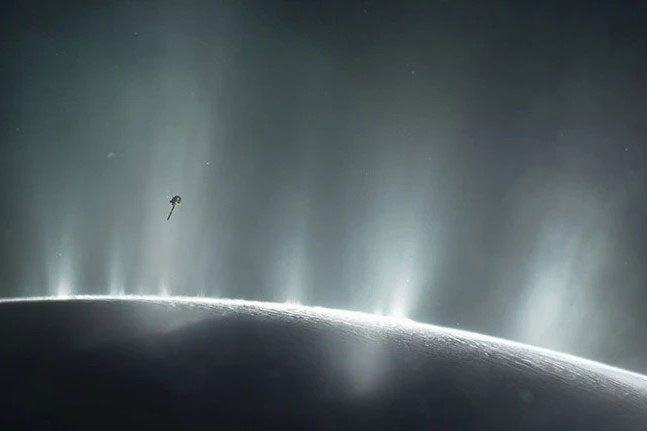The James Webb Space Telescope has detected a massive plume of water vapor erupting from Saturn’s moon Enceladus, significantly larger than any previously observed plumes.

The NASA spacecraft Cassini captured images of the water vapor plumes erupting from the surface of Saturn’s moon Enceladus. (Image: NASA/Nature).
In 2005, NASA’s spacecraft discovered ice particles erupting from the ocean beneath Enceladus’s surface through fissures. However, the James Webb Telescope has now found that these ice particles are being ejected much farther than previously estimated, as reported by Nature on May 18.
“It’s truly vast,” said astronomer Sara Faggi, who noted that scientific research on this matter will be published soon.
Enceladus excites astrobiologists because it is one of the few places where humanity can search for extraterrestrial life.
The salty ocean beneath Enceladus’s icy exterior could provide a habitat for living organisms. These oceans may be sustained by chemical energy at hydrothermal vents on the ocean floor.
The material ejected from Enceladus, primarily through fissures at the South Pole, is a direct link to the potential existence of extraterrestrial ecosystems.
Discoveries from the James Webb Telescope may provide additional groundwork for NASA missions to Enceladus in search of signs of life. One proposal is to develop autonomous robotic snakes that could crawl beneath the ice layers of Enceladus to explore the ocean.


















































